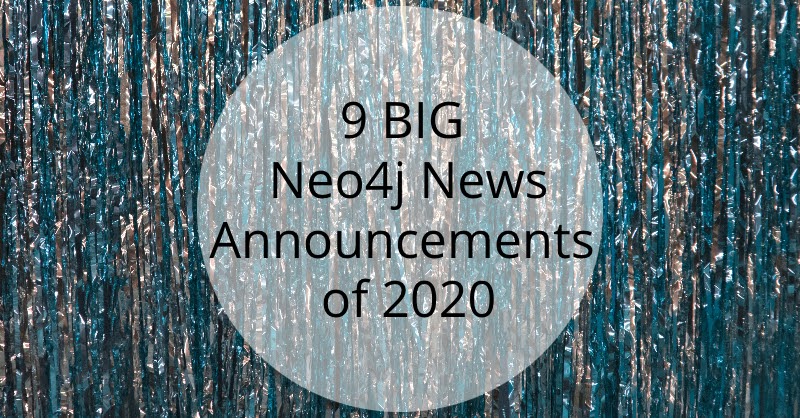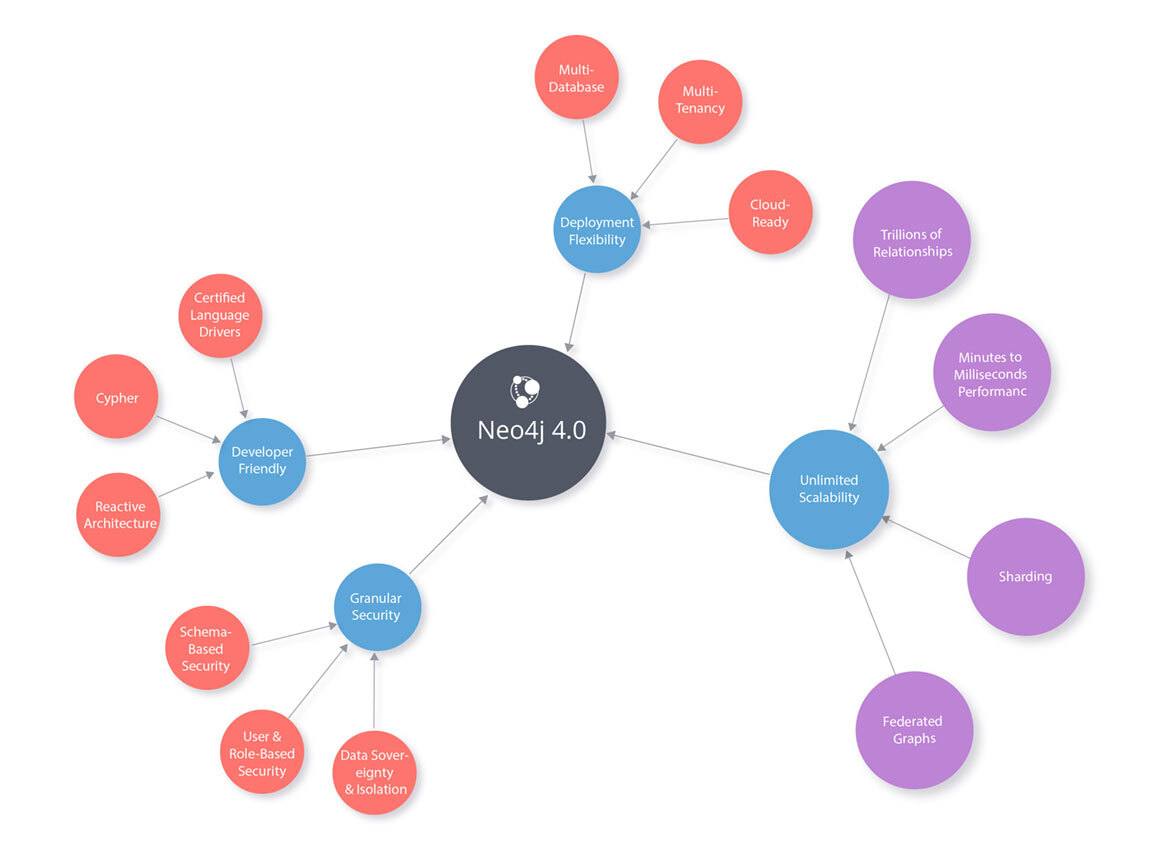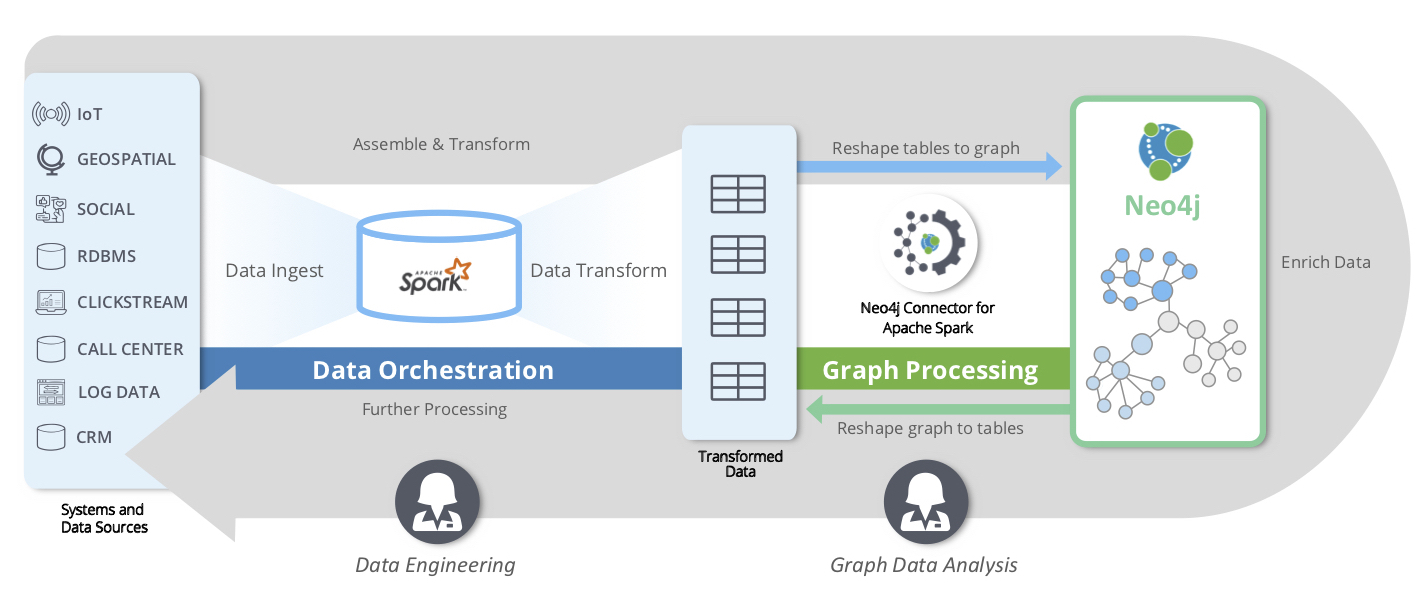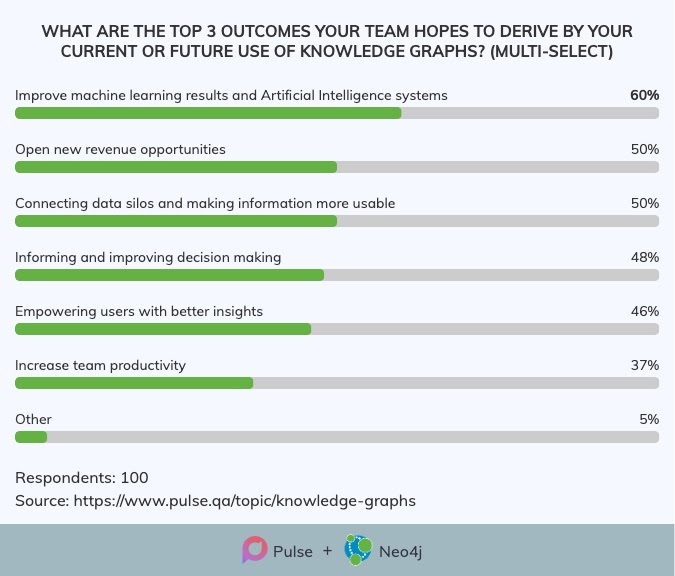
2020 provided to be a year like no other – wouldn’t you agree? Nothing explains this more than supply chain woes like no toilet paper in stores! (There’s even a graph example for that!) Despite the many unique challenges this year brought, graph technology continued to make way in various industries, from COVID-19 contact tracing to cracking industrial-scale fraud rings in banking.
Let’s reflect on the many exciting things that did happen to make this year both impactful and memorable.
Big News for Neo4j
Neo4j Named a Leader in Graph Data Platforms by Independent Research Firm
Neo4j was recognized as a leader in The Forrester Wave™ for Graph Data Platforms, Q4 2020. Of the 12 graph data platform providers recognized, Neo4j achieved the highest possible scores in 17 of the 27 critical criteria used for evaluation. The report is designed to help enterprise architecture professionals select the right graph data platform for their needs, sharing how organizations can apply this powerful technology to solve complex data and analytics problems.
The Future of Graph Databases is Here: Introducing Neo4j 4.0

The release of the Neo4j 4.0 – one of our biggest releases to date – addressed the broad and complex challenges of application development in the decade to come, including unlimited scalability, intelligent data context and robust enterprise-grade security. This update enabled enterprises to build intelligent applications that leverage the increasingly dynamic, interconnected nature of data.
Analyzing the FinCEN Files with Neo4j

In September, the International Consortium of Investigative Journalists (ICIJ) exposed a vast network of industrial-scale money laundering running through Western banks and generally ignored by U.S. regulators – and they used Neo4j to help crack the case wide open.
The global investigation, dubbed the FinCEN Files, reveals how money launderers move their dirty money. Emilia Díaz Struck, ICIJ’s research editor and Latin American coordinator, spoke to diginomica about the role graph databases played in untangling the complex data associated with the FinCEN files.
“The way we use graph databases is always the same: to find hidden connections that are not obvious. If you find a shareholder or a person, could this person also actually be this person or entity you’ve seen over here, and so be connected to more things I’m not seeing yet. Whenever you have vast amounts of data, your risk is missing what is there; technology and machine learning, things like graph databases, allow you to see things that sometimes could take you years as a human.”
Ecosystem + Cloud
Neo4j Delivers First and Only Integrated Graph Database Service on Google Cloud Platform

Neo4j AuraDB Professional was made available on Google Cloud Platform in August as a fully integrated graph database service on the Google Cloud Marketplace. As a self-service solution, Neo4j AuraDB Professional is designed for small and medium businesses to build, deploy and manage graph-enabled applications rapidly.
Introducing the Neo4j Connector for Apache Spark

Neo4j Connector for Apache Spark is an integration tool to move data bi-directionally between the Neo4j Graph Platform and Apache Spark™. The new connector provides easy, bi-directional access between Neo4j graph datasets and many other data sources – including relational databases, semistructured and unstructured (NoSQL) repositories – transforming data from tables to graphs and back as needed.
Neo4j BI Connector Brings the Power of Graph Databases to the World’s Most Popular Data Discovery Tools

The Neo4j BI Connector is the first enterprise-ready driver to bring graph data to the Business Intelligence (BI) market. The Neo4j BI Connector presents live graph datasets for analysis within popular BI technologies such as Tableau, Looker, TIBCO Spotfire, Oracle Analytics Cloud, MicroStrategy and more.
Data Science
Introducing Neo4j for Graph Data Science, the First Enterprise Graph Framework for Data Scientists

Neo4j announced the availability of Neo4j for Graph Data Science™, the first data science environment built to harness the predictive power of relationships for enterprise deployments. Neo4j for Graph Data Science helps data scientists leverage highly predictive, yet largely underutilized relationships and network structures to answer unwieldy problems.
An updated version of Neo4j for Graph Data Science was also released later in the year. This is the first graph machine learning for the enterprise and a breakthrough that democratizes advanced graph-based machine learning (ML) techniques by leveraging deep learning and graph convolutional neural networks. Version 1.4 upended the way enterprises make predictions in diverse scenarios from fraud detection to tracking customer or patient journey, to drug discovery and knowledge graph completion.
Applying Graphs to Real-World Problems
NASA, ICIJ, ATPCO, Lyft and More Choose Neo4j for their Knowledge Graphs

The Knowledge Graph Quick Start program was released to support Neo4j’s rapidly growing knowledge graph customer base. This market acceleration is corroborated in the results of an independent survey, “Technology Executive Priorities for Knowledge Graphs” recently conducted by Pulse, which charts a surge in demand for knowledge graphs among large enterprises.
Here are some key results from the survey:
- Majority of IT decision makers surveyed (89%) have an active plan to expand their knowledge graph initiatives over the next 12 months
- 92% of respondents believe that knowledge graphs improve machine learning accuracy and associated processes
- An overwhelming majority of technology executives (97%) believe that there’s more potential within their organization for knowledge graph usage
- The top three reasons to expand knowledge graphs are to improve machine learning and artificial intelligence systems (60%), open new revenue streams (50%) and connect data silos to make information more accessible (50%)
The World’s Leading Companies Use Neo4j to Manage Supply Chains, Boost Resilience and Ensure Business Continuity

Neo4j experienced a surge in demand from organizations looking to use graph databases to more effectively manage supply chains and ensure business continuity. Neo4j customers were among the first to realize that graph technology is essential to optimize flow of goods, uncover vulnerabilities, and boost overall supply chain resilience – a topic McKinsey explored in a recent report.
Well, that’s a wrap for 2020 (and if you’re like me, you’re probably glad it’s over). Stay tuned to the Neo4j Newsroom for all the latest updates in 2021. Wishing everyone a healthy and happy new year!
Get My Free Copy



